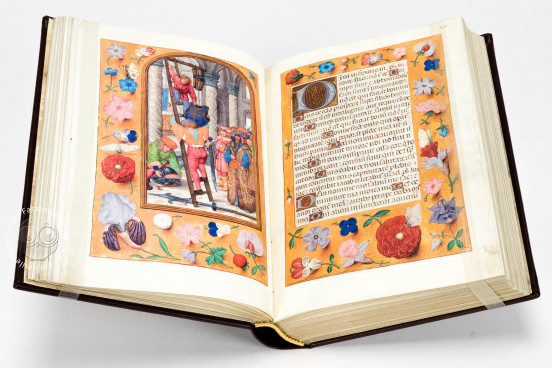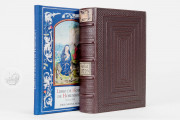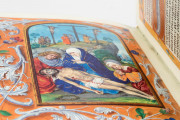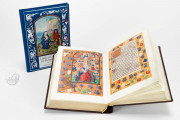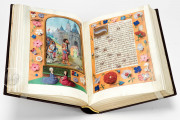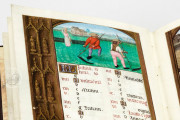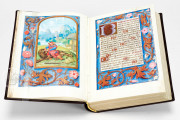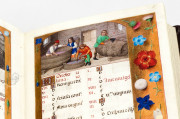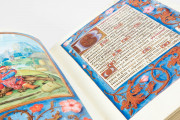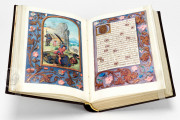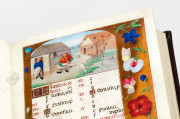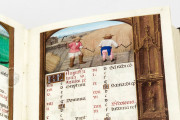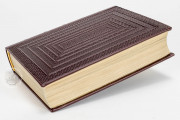The Book of Hours of Horenbout is one of the most exquisite example of Northern Renaissance from Belgium, possibly Ghent. The codex, also known as Libro de Horas de Horenbout, was written and illuminated in the early 15th century and it features 19 elegantly illuminated full-page miniatures, 8 lovely quarter-page miniatures, and 12 superbly depicted small calendar miniatures. With its neat use of colors in combination with the shimmering gold, the manuscript is justly considered an outstanding example of Northern Renaissance.
Written in Latin, the codex exhibits an extensive iconographic apparatus that includes 8 full-page miniatures of high qualitative level which seem to have no parallel in any other book of the same type.
Book of Hours of Horenbout: the Master of James IV of Scotland
The most interesting miniatures are probably those of the four evangelists – John, Matthew, Luke, and Mark – each located at the beginning of their respective gospels and, more than any other illustration, important to identify the artist behind the work.
Each miniature is a work of art in its own right suggesting that there was more than one artist who collaborated to the production of the manuscripts, however, one artist has been identified as the main miniaturist of most of the iconographic apparatus: the Master of James IV of Scotland.
A testament to his artistic skills is f. 222v – the miniature of the Last Judgment – exhibiting the artist’s ability to concentrate on the personal aspects of a scene even when dealing with epic themes such as this.
Unknown but Powerful Commissioner
The commissioner of such superb work remains unknown, however, there seem to be a few clues as to what kind of patron could have commissioned the manuscript. It has been suggested that the patron was probably male and – given the presence of the David cycle (including his coronation as Saul’s successor) – also very powerful.
Indeed, although the cycle was very popular in manuscripts of the end of the 15th century, its significance stands in the fact that rulers identified with the figure of David, possibly indicating that the book was made for a high-powered figure of the German court of Hapsburg.
The life of the Book of Hours of Horenbout is obscure; what is certain is that the codex belonged to Jean de Pallant and his wife Anna van Culenborgh.
More than One Scribe
The Gothic script is very consistent throughout the manuscript which would lead to believe to the existence of one scribe only. However, this seems hardly realistic given the extension of the work so it is probable that at least a group of scribes was involved, all very consistent within one another.
We have 1 facsimile edition of the manuscript "Book of Hours of Horenbout": Libro de Horas de Horenbout facsimile edition, published by Testimonio Compañía Editorial, 2014
Request Info / Price
